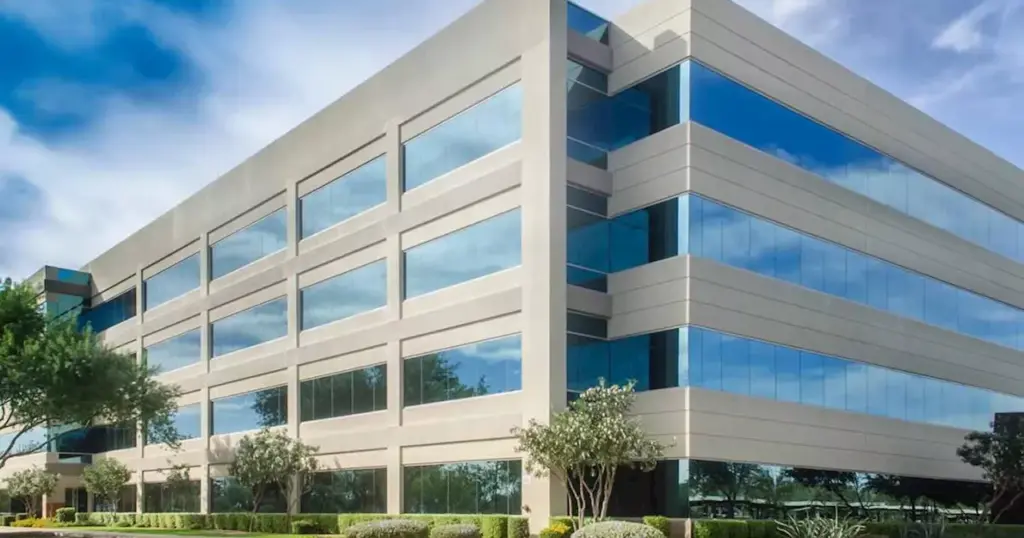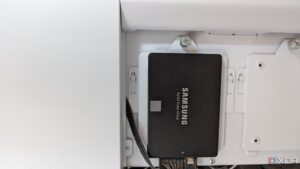
The recently released Q3 2025 Commercial Real Estate (CRE) report highlights a notable slowdown in industrial development across Southern California, particularly in the Inland Empire. This pause contrasts with a surge in office leasing activity in the South Bay region, indicating a shifting landscape amidst economic uncertainty.
In Los Angeles, the focus on leasing activity has remained concentrated in the South Bay. Major sublease transactions reflect companies’ desires to expand while also seeking flexible, cost-effective options. For instance, entertainment software developer COSM and space vehicle manufacturer Varda Space Industries secured subleases of 67,725 square feet and 54,479 square feet, respectively, from Beyond Meat in El Segundo. Additionally, Canvas Worldwide relocated to a 68,301-square-foot sublease in El Segundo, while professional services firm KPMG downsized to a more efficient 64,200-square-foot office in Downtown Los Angeles and leased 49,903 square feet at Continental Park in El Segundo.
The report indicates a significant pause in new warehouse construction, with no new projects breaking ground in the Inland Empire during the quarter. This marks the first time in 20 years that the region has experienced such a halt. Mike McCrary, vice chairman at JLL, emphasized that this is not a long-term trend, stating, “We built too much too quickly and we’re at a point where we have corrected and we are now moving towards a balanced equilibrium around development.”
Despite the slowdown, the Inland Empire has witnessed a remarkable construction boom since the onset of the pandemic, adding approximately 100 million square feet of warehouse space since the beginning of 2021. At the end of Q3 2025, there were still 4.9 million square feet under construction. Factors contributing to the temporary pause include high construction costs due to labor and materials, alongside a vacancy rate above recent historical averages. The industrial vacancy rate in the Inland Empire increased to 7.8%, while the availability rate surged to 11.5%.
As a result of this industrial slowdown, asking rates in the Inland Empire have decreased for ten consecutive quarters, with an asking rent now at $1.16 per square foot per month, reflecting a 9.4% decline year over year. In Los Angeles, asking rates have similarly dropped for eight straight quarters. Long-term trends paint a different picture, however, as average rents have surged by 48.5% compared to pre-COVID-19 levels in Q4 2019. Tenants who signed leases five or more years ago are now facing significant rent increases, complicating lease negotiations.
The office market in Los Angeles is experiencing challenges, with a vacancy rate of 23.9% and a negative net absorption of 515,035 square feet, leading to a year-to-date decline in occupancy. Asking rents have decreased to $3.58 per square foot per month on a full-service gross basis, with rates peaking in West Los Angeles at $5.13 per square foot per month for Class A space. Tenants are increasingly seeking furnished, move-in-ready spaces, resulting in a rise in large subleases in the South Bay. Lease structures are evolving to provide more flexibility, with three to five-year agreements becoming more commonplace.
On the industrial side, vacancy rates have climbed to 4.8%, although the availability rate fell for the first time in nearly four years to 6.5%. This decline could signify a shift in momentum for the industrial market, which saw peak activity post-COVID. The overall office market vacancy rate has now reached 19% as tenants remain uncertain about their long-term space needs.
In Orange County, the Greater Airport Area emerged as the most active segment of the office market, accounting for 58% of leasing activity in the past quarter. The office market has seen properties repositioned as multifamily and industrial spaces, with approximately 2 million square feet of office space removed since the beginning of 2023, and another 5 million square feet slated for demolition in the coming years.
The industrial market continues to face challenges with a rising vacancy rate, increasing for the 11th consecutive quarter. This rise has resulted from both tenant move-outs and new deliveries completed without pre-commitments. Currently, there are 17 buildings totaling 2 million square feet under construction, with only four pre-leased.
Despite the challenges, the Inland Empire remains a vital industrial hub with about 650 million square feet of warehousing and manufacturing space. The overall vacancy rate in this region has risen to 7.8%, even as activity has increased, evidenced by 3 million square feet of positive net absorption being outpaced by construction completions that added 4.5 million square feet of vacant space. New construction is limited, with the region experiencing its smallest pipeline in over a decade.
While tariffs, high construction costs, and elevated interest rates present ongoing challenges, the Inland Empire continues to be one of the most active industrial markets in the United States. Notably, the office vacancy rate in the Inland Empire remains the lowest among major Southern California markets at 8.6%. Medical office development is a bright spot, although overall leasing activity has slowed compared to the previous year. Affordability remains a key driver, but the tenant base is primarily composed of small and mid-sized local businesses.
In San Diego, the office vacancy rate has held steady at 14.3%. Tenant activity is strongest for leases below 10,000 square feet, as companies prioritize higher-quality spaces with smaller footprints. Nevertheless, larger tenants have also been active, with the largest lease of the quarter signed by law firm Jones Day. The technology sector accounted for the highest percentage of new leasing activity at 23%, followed by government and legal services.
San Diego’s industrial vacancy rate has decreased to 7.5%, primarily due to the completion of a 1.1-million-square-foot build-to-suit facility for Amazon, which ended a streak of ten consecutive quarters of occupancy losses. County-wide, tenants are projected to lease 4.3 million square feet over the next two years. Rents for research and development spaces increased by 1.5%, while manufacturing rents saw a decline of 7.6% year over year. Manufacturing continues to be a key driver, complemented by robust activity in technology, life sciences, and defense sectors.







